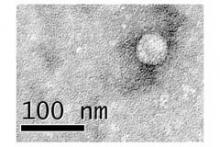It was almost as if someone decided April would be hepatitis C month.
In case you hadn’t notice, April saw publication of six separate articles in the New England Journal of Medicine on what were essentially two new, different, all-oral regimens for hepatitis C infection that both consistently produced better than 90% sustained viral response after 8-24 weeks of treatment with good tolerability.
In short, two different, effective cures for hepatitis C arrived this month with safe and easy-to-administer regimens.
(The articles were by Dr. Stefan Zeuzem (N. Engl. J. Med. 2014 April 24;370:1604-14), Dr. Jordan J. Feld (N. Engl. J. Med. 2014 April 24;370:1594-603), Dr. Fred Poordad (N. Engl. J. Med. 2014 April 12 [doi:10.1056/NEJMoa1402869]), Dr. Kris V. Kowdley (N. Engl. J. Med. 2014 April 11 [doi:10.1056/NEJMoa1402355]), and two articles by Dr. Nezam Afdhal (N. Engl. J. Med. 2014 April 12 [doi:10.1056/NEJMoa1402454]; N. Engl. J. Med. 2014 April 17;370:1483-93).
Heralding the good news were no less than three editorials and perspectives in the journal (by Dr. Raymond T. Chung (N. Engl. J. Med. 2014 April 24;370:1576-8), Dr. Channa R. Jayasekera (N. Engl. J. Med. 2014 April 10 [doi:10.1056/NEJMp1400160]), and Dr. Jay H. Hoofnagle (N. Engl. J. Med. 2014 April 17;370:1552-3), making the New England Journal of Medicine’s April hepatitis C total a whopping nine major items.
That wasn’t all, because not only did April’s hepatitis C tsunami feature major advances in treatment efficacy and safety, it also brought to the table unprecedented issues of drug cost. Unprecedented to the tune of sofosbuvir’s (Sovaldi) $1,000/pill price tag set by manufacturer Gilead. That adds up to a 12-week course of the drug costing $84,000 – and sofosbuvir is just part of one of the new hepatitis C wunderkind combinations.
As one of the commentaries put it, "the predicted costs of the new oral antiviral agents are as breathtaking as their effectiveness."
Breathtaking cost inevitably means media buzz, such as an April piece in the New Yorker, and another in the New York Times. Coming to terms with the cost was also a major focus in all three of the NEJM comment pieces.
Drug cost, especially $1,000/day cost, is nothing to minimize. But it also shouldn’t diminish the news that the era of hepatitis C cure has arrived, and at a speed that adds to the breathlessness. Less than a year ago, a review of hepatitis C treatment pegged the state of treatment as achieving 70%-80% sustained viral response (N. Engl. J. Med. 2013;368:1907-17). That’s some leap, to move from that to two different regimens scoring in the mid-90s in less than a year.
Also striking was how much credit experts gave the antiviral path carved out by HIV research that the hepatitis C work could follow, especially the concept of combining antiviral regimens to subvert emergence of drug resistance.
As experts from Stanford and the Mayo Clinic said in their commentary, the HIV model also carries the promise that drug costs can eventually be controlled, and that widespread administration of these effective new hepatitis C treatments will happen worldwide, just as they have for HIV (N. Engl. J. Med. 2014 April 10 [doi:10.1056/NEJMp1400160]).
"Annual costs for first-line ART [antiretroviral therapy, for HIV] have decreased from more than $20,000 in the mid-1990s to often less than $100/person," they noted. "The task of ART delivery has shifted from specialist physicians to primary care physicians, medical assistants, nurses, and public health officers, and nearly 10 million people in low- and middle-income countries are currently receiving treatment."
In fact, the authors of this commentary suggested that global hepatitis C treatment could piggyback onto the existing infrastructure of global HIV treatment. Another comment author, Dr. Raymond Chung from Massachusetts General, Boston, said "it is incumbent on countries, providers, and pharmaceutical companies to enact delivery strategies that mirror the delivery of antiretrovirals for HIV," in an audio interview with NEJM.
A regimen that costs close to $100,000/patient poses an economic hurdle, but the much greater challenge was creating the agents and finding combinations that safely worked at virus elimination. That achievement dwarfs issues of financial practicality. Competition among drugs will produce price reductions. Drugs eventually come off patent. Society will find a way to foot the bill to eradicate hepatitis C now that tools exist to do it.
On Twitter @mitchelzoler


